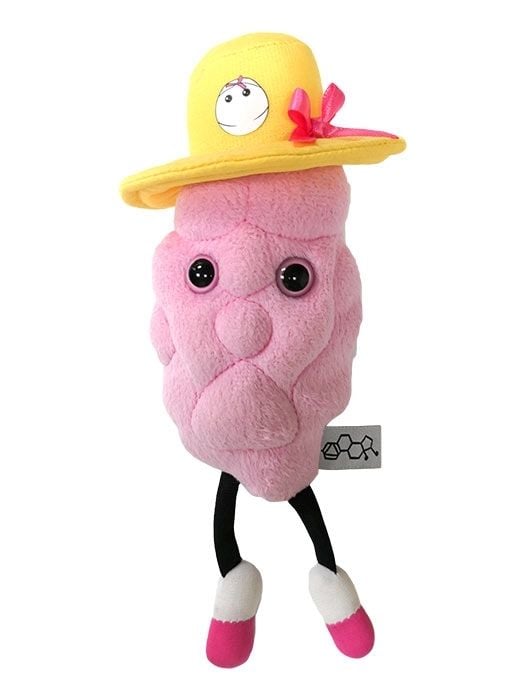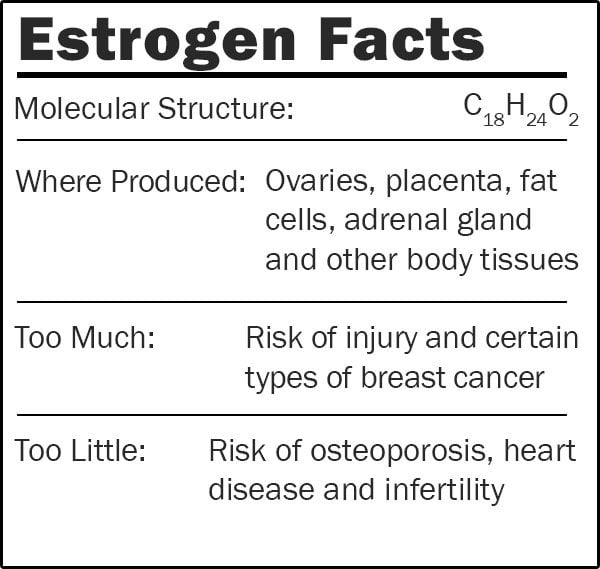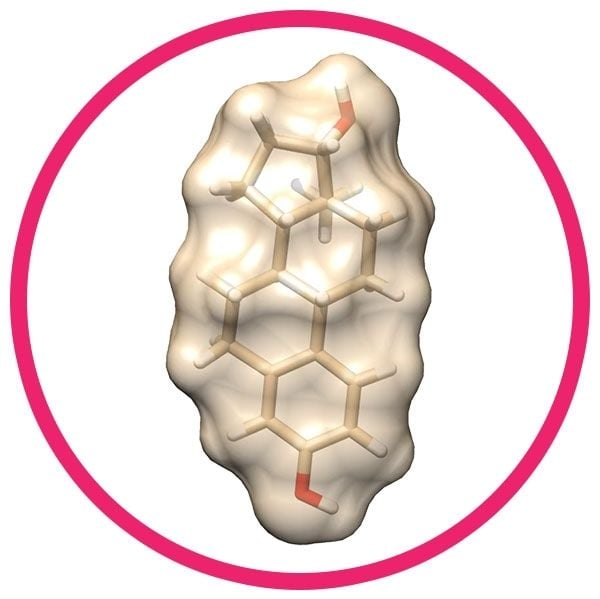Estrogen
Our Estrogen is based on the shape of the actual molecule!
Product Details
Additional Information
| Sizes | Giantmicrobes are based on actual microbes, cells, organisms and other critters, only 1,000,000 times actual size! Gigantic (GG) 40-60cm XL (XL) 25-38cm Original (PD) 12-20cm Keychain (KC) 5-10cm with clip |
|---|---|
| Materials | Plush from all new materials. Stuffed with polyester fiber fill. Surface washable: sponge with water & soap, air dry. |
| Packaging | Each plush microbe includes a printed card with fun, educational and fascinating facts about the actual microbe or cell. |
| Safety | Every product meets or exceeds U.S. and European standards for safety. For ages 3 and up. |
All about Estrogen
Facts: Estrogen is the female sex hormone responsible for the functioning of the menstrual cycle, fertilization and pregnancy. During puberty, estrogen levels rise to fuel the development of breasts, wider hips and other secondary sex characteristics of women.
Like all hormones, estrogen is a chemical messenger secreted by one body tissue that travels to another tissue to affect growth and behavior. Hormones are secreted in bursts in amounts that change hourly and daily, as well as varying during stages of pregnancy and the menstrual cycle. During this cycle, estrogen produces an environment suitable for fertilization, including growth of the uterine lining. If a women's egg is fertilized, estrogen works with progesterone, another hormone, to stop ovulation. If the egg is not fertilized, estrogen levels decrease and menstruation begins.
In women, estrogen is mostly produced in the ovaries. Follicle-stimulating hormone (FSH) stimulates the ovaries to produce estrogen. In both women and men estrogen is also made by fat cells, the adrenal glands and other tissues, but in much lower amounts. Estrogen is actually a class of different hormones, each with specific functions. There are four main types: estradiol, estriol, estetrol and estrone. Estradiol is formed in the ovaries and is the primary estrogen. Estriol is produced in the placenta during pregnancy. Estetrol also occurs only during pregnancy and is made by the fetal liver. Estrone is widespread throughout the body and is present after menopause.
Other than its reproductive function, estrogen is also important for protein metabolism, water retention and bone formation. Working with vitamin D and calcium, estrogen helps to break down and rebuild bone tissue. Estrogen levels decline after menopause when women stop menstruating. With less estrogen, the process of rebuilding bones slows. This is why women are more prone to developing osteoporosis as they age. Decreasing estrogen levels can also lead to hot flashes, itching, dryness and serious conditions including an increased risk of heart disease.












